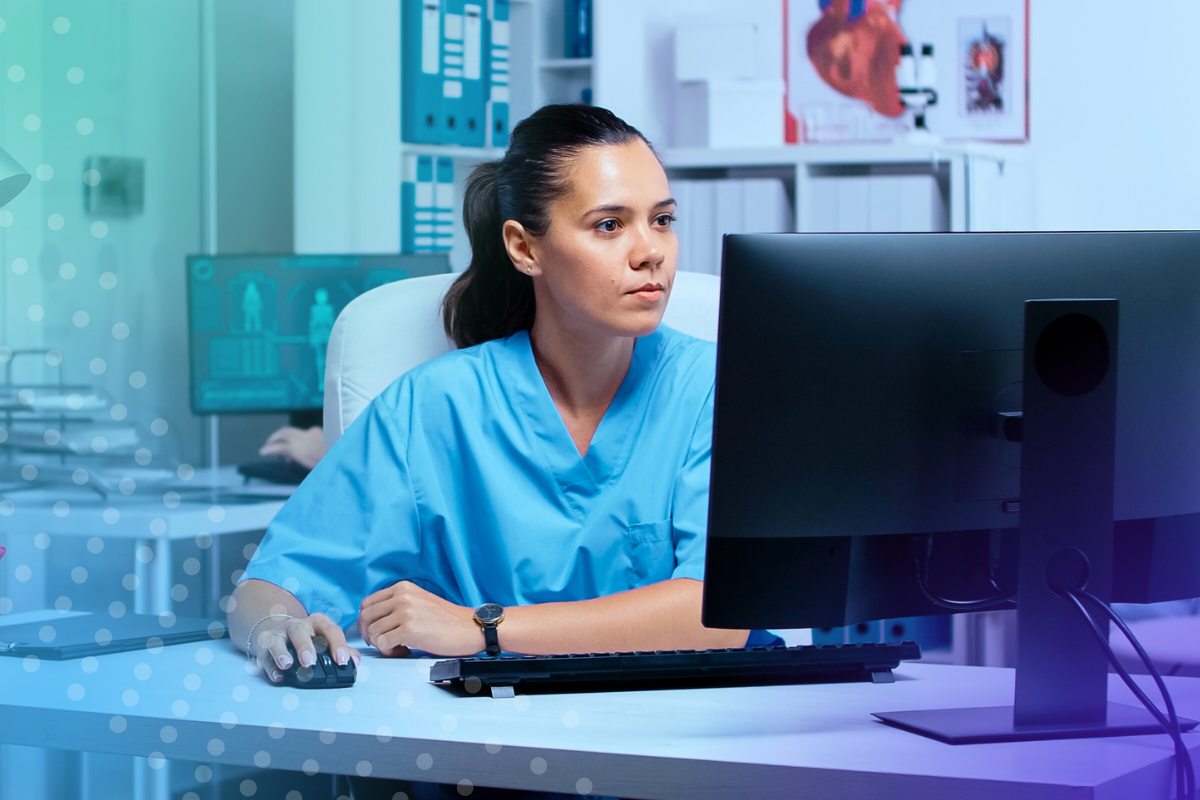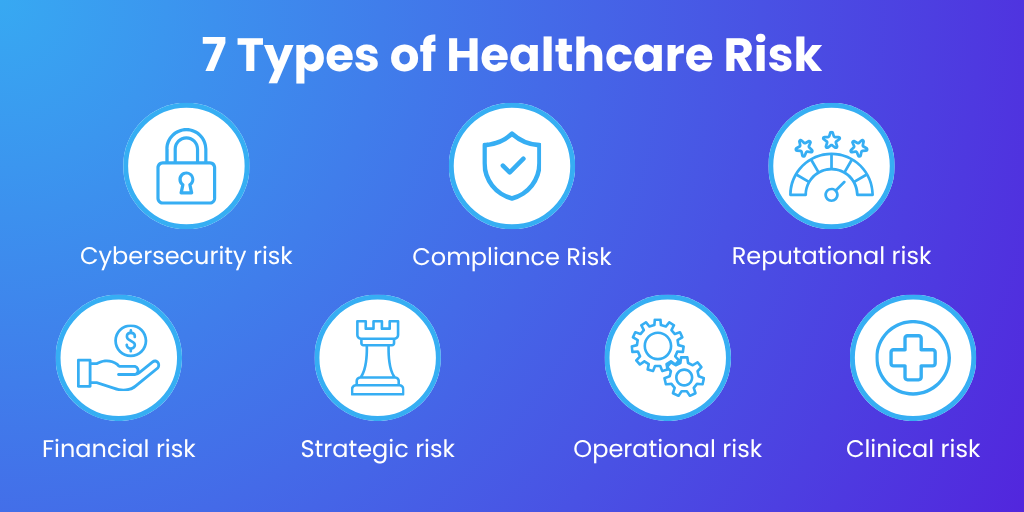5 min read
Risk Assessment in Healthcare: How Tech Predicts & Prevents Harm
Performance Health Partners
October 6, 2025

Risk rarely arrives with a warning label. Strong risk assessment in healthcare practices are critical because threats can appear as a sudden cyber breach, a regulatory change buried in fine print, or a storm that shuts down global shipping routes. These moments test an organization’s ability to adapt and respond.
Traditional risk assessment methods, built on historical data and manual processes, can only go so far in anticipating threats of this speed and complexity.
Technology is closing that gap. Artificial intelligence, big data analytics, blockchain, and predictive modeling give organizations sharper foresight, faster response times, and more confident decision-making. The shift is no longer about managing risk after it happens but anticipating it before it strikes.
The Changing Nature of Risk
Risk management in healthcare is no longer static.
Emerging technologies, interconnected systems, and global dependencies have created a landscape where small events can have disproportionate impacts. A single supplier outage can halt production worldwide. A vulnerability in one widely used software platform can compromise thousands of organizations simultaneously. Social and political movements can disrupt markets overnight through viral communication.
Several forces are accelerating this evolution:
- Digital transformation increases the attack surface for cybercriminals.
- Globalization extends supply chains across political and regulatory boundaries.
- Climate change amplifies the frequency and severity of natural disasters.
- Regulatory fluidity forces constant adaptation to new rules and compliance expectations.
These drivers mean that organizations must anticipate a broader spectrum of risks, many of which evolve in real time. It is no longer enough to predict what could happen; leaders must also prepare for how quickly it might happen and how widely it might spread.
Key Technological Tools in Healthcare Risk Assessment
To address these evolving risks, organizations are turning to advanced tools that improve both speed and accuracy in risk assessment in healthcare.
The U.S. Food and Drug Administration (FDA) has approved some 1,200+ medical devices as of July 10, 2025 that leverage AI and machine learning, many aiding faster, more accurate diagnoses in areas like radiology and cardiology.
Beyond devices, the following technologies are reshaping how risks are identified, analyzed, and managed across the healthcare landscape.
Artificial Intelligence and Machine Learning
Artificial Intelligence (AI) and Machine Learning (ML) process vast datasets to reveal hidden patterns and generate predictive insights. In the context of risk assessment in healthcare, they can flag early warning signs of patient deterioration, forecast disease outbreaks, or detect irregular activity in clinical systems. By spotting anomalies such as unusual medication orders or unauthorized access attempts, these tools allow healthcare organizations to mitigate risks before they escalate.
Big Data Analytics
Big data platforms integrate information from EHRs, incident reporting systems, wearable devices, and public health records. For risk assessment, this means healthcare organizations can track infection rates across multiple facilities, identify hotspots, and prioritize interventions where they will have the greatest impact. By consolidating diverse data streams, healthcare leaders gain a clearer, real-time picture of systemic vulnerabilities.
Natural Language Processing (NLP)
NLP extracts insights from unstructured sources like clinical notes, safety reports, and policy updates—materials that often contain valuable but overlooked risk signals. In healthcare risk assessment, NLP can highlight recurring medication errors buried in incident narratives or flag policy changes that introduce new compliance risks. This enables organizations to act on potential threats that might otherwise remain hidden.
Blockchain & Smart Contracts
Blockchain creates tamper-proof audit trails and provides real-time transaction tracking of transactions, which strengthens the accuracy of healthcare risk assessments. In supply chains, blockchain verifies authenticity and traceability, reducing the risk of counterfeit or compromised products reaching patients.
Smart contracts further reduce risk by automating compliance checks and claims processing, minimizing the chance of human error or fraud.
Real-world pilots are already proving the value of this approach. For example, MediLedger, a consortium including Pfizer and Gilead, tested a blockchain platform to comply with the U.S. Drug Supply Chain Security Act. The system created immutable records that verified medication authenticity and tracked products across the supply chain, thus helping healthcare organizations assess and reduce risks of counterfeit drugs before they could reach clinical settings.
Predictive Modeling
Predictive models use statistical techniques to forecast potential risks before they materialize. These models help healthcare organizations plan both immediate responses and long-term risk strategies.
Within healthcare risk assessment, these models can anticipate patient surges, flag ICU capacity risks, and identify individuals vulnerable to adverse events. By simulating possible scenarios, predictive models allow leaders to allocate resources, adjust staffing, and prepare proactive interventions.
The impact of predictive modeling is already being seen in clinical practice.
At the University of California San Diego School of Medicine, researchers developed an AI algorithm known as COMPOSER to predict sepsis risk in hospitalized patients. By analyzing EHR data in real time, COMPOSER identified high-risk patients hours earlier than standard detection methods, resulting in a 17% reduction in mortality.
This demonstrates how predictive modeling transforms risk assessment into life-saving proactive care.
Benefits of Technology in Risk Assessment
The adoption of advanced technology in healthcare risk assessment is not just about keeping pace with change. Rather, it’s about gaining a measurable advantage. By improving how data is gathered, analyzed, and acted upon, these tools offer benefits that directly impact organizational safety, operational efficiency, and financial stability.
Enhanced Accuracy
Automation reduces the chance of human error and processes large, diverse datasets to produce more precise forecasts. NLP ensures subtle warning signs are not missed.
For example, a study of 300 challenging clinical cases showed that Microsoft's AI Diagnostic Orchestrator (MAI‑DxO) correctly diagnosed 85% of cases—far above the 20% average for general‑practice doctors in the U.S. and U.K.—and did so at 20% lower cost.
Proactive Risk Management
Technology enables earlier detection of emerging threats. Organizations can stop cyberattacks in their early stages, redirect resources during supply disruptions, or act on public health warnings before crises escalate.
For example, healthcare organizations can forecast patient surges using seasonal data, or anomaly detection systems can alert staff to possible medication dispensing errors in real time, preventing harm before it occurs.
Operational Efficiency & Cost Savings
Predictive maintenance lowers equipment downtime. Blockchain reduces inefficiencies in audits and supply chain verification. More accurate risk scoring can improve insurance rates and reduce penalties for noncompliance.
In healthcare, predictive maintenance can assist in preventing medical equipment failures, ensuring the authenticity of medications, and following compliance regulations.

Challenges & Risks
While the benefits are significant, technology also introduces new challenges that organizations must navigate carefully. Understanding these risks ensures that digital tools strengthen (rather than compromise) a facility’s safety and compliance objectives.
- Privacy and Security Concerns: Using sensitive personal or financial data creates significant responsibility. Organizations must comply with laws like GDPR and CCPA while maintaining robust security measures.
- Overreliance on Technology: Automated systems can fail or make errors if they are built on biased or incomplete data. Human oversight is essential to interpret results and handle exceptions.
- Skill Gaps: Adopting AI, blockchain, and advanced analytics requires specialized expertise that can be costly and difficult to acquire.
- Ethical Considerations: Algorithms can unintentionally reinforce bias. Opaque “black box” systems can make it hard to explain decisions, and automation can displace jobs if not managed responsibly.
Emerging Trends & the Future
The next wave of risk assessment will be shaped by technologies that are only beginning to show their full potential. From new computing capabilities to more connected devices, these trends point toward a future where risks are spotted earlier, understood more deeply, and managed more effectively.
- Quantum Computing: Quantum systems could process complex risk models far faster than traditional computing, offering breakthroughs in finance, climate forecasting, and cybersecurity.
- IoT Expansion: An increase in connected devices will provide richer, real-time data for risk monitoring across industries.
- Advanced AI Integration: Combining AI with satellite imagery, social media data, and financial information will create more comprehensive risk simulations and predictive models.
- Regulation and Collaboration: Stronger governance and public–private partnerships will be key in developing ethical, transparent, and effective risk assessment technologies.
Final Thoughts
Technology is transforming risk assessment in healthcare from a slow, retrospective exercise into a fast, forward-looking capability. With AI, big data, blockchain, and predictive modeling, organizations can anticipate threats with greater precision and act before damage occurs.
The benefits are compelling, from enhanced accuracy to improved operational efficiency. However, responsible use, skilled talent, and strong governance remain essential. As emerging technologies like quantum computing and expanded IoT networks become part of the toolkit, the potential to build a safer, more resilient future grows even stronger.


